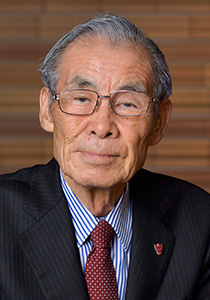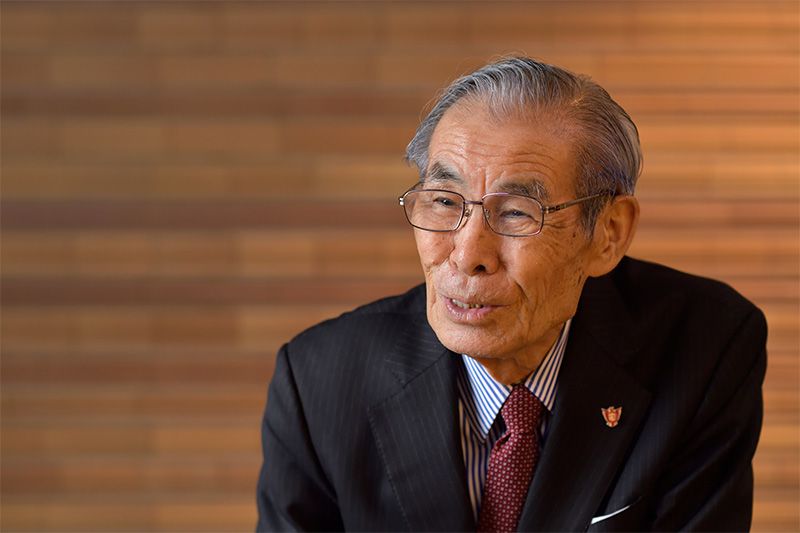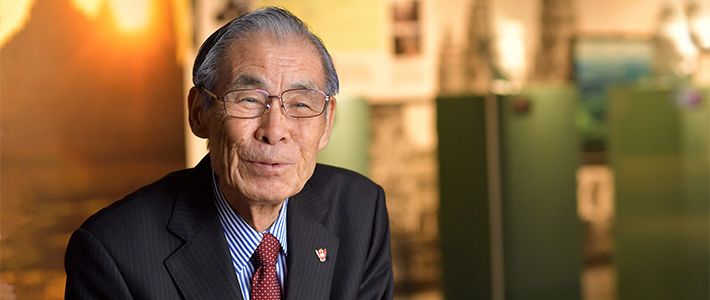
Restoring Angkor Wat: An Interview with Japanese Scholar Ishizawa Yoshiaki
Culture- English
- 日本語
- 简体字
- 繁體字
- Français
- Español
- العربية
- Русский
A Fateful Letter
INTERVIEWER You’ve been involved with Angkor Wat for nearly 60 years. What made you decide to devote your life to preserving the heritage of Cambodia?
ISHIZAWA YOSHIAKI It started with a letter I received in 1980. At that time the monuments at Angkor had been badly affected by war and were engulfed by dense jungle. The letter was from Professor Pich Keo, a conservator I had worked with at the Ministry of Culture and Information’s Angkor Conservation Office under the Heng Samrin government. Civil war broke out in Cambodia in 1970, and the Pol Pot regime took power in 1975. The next three and a half years were a nightmare in which 1.5 million people were murdered by the Khmer Rouge and another 1.2 million left the country as refugees. In the letter, which reached me via a newspaper company, I learned that only three of the thirty six conservators who had been at the conservation office had survived the genocide.
I had spent time at the conservation office after I graduated from university in 1961 working on the inscriptions at Angkor and had made friends with the conservation workers there. I had lost contact with them during the civil war, though, and learned from the letter that the office had been closed and its activities at a standstill for more than ten years. Owing to neglect, the monuments had deteriorated seriously and there was a real risk that all the restoration work would be lost. In his letter, Professor Keo implored me to do anything I could to help.
In response to the letter I entered Cambodia, which was still smoldering from the ravages of war, becoming the first outside specialist to do so. I arrived with a television crew, but the ongoing political chaos kept us from starting survey work right away. In 1989 Sophia University dispatched an international survey, although full-fledged preservation work didn't get underway again until peace was finally reached in 1991. Our aim was to prepare conservators to carry out archeological surveys and direct preservation and restoration efforts as well as train workers and stonemasons for restoration work. The project continues to this day.
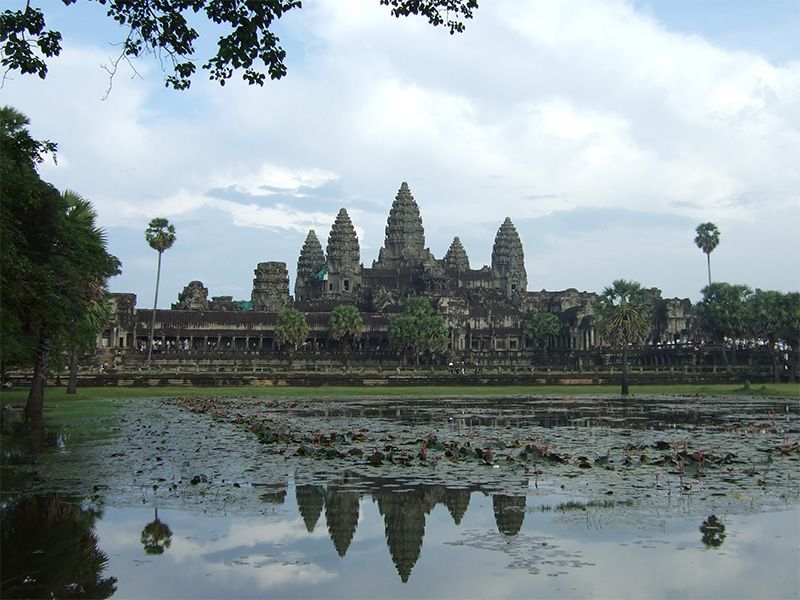 Angkor Wat, the best-known temple of the Angkor complex, is famous for its outstanding artistic value. The site, the largest complex of ancient monuments in Asia, is situated some 240 kilometers northwest of the capital of Phnom Penh. (Photograph courtesy of Sophia University)
Angkor Wat, the best-known temple of the Angkor complex, is famous for its outstanding artistic value. The site, the largest complex of ancient monuments in Asia, is situated some 240 kilometers northwest of the capital of Phnom Penh. (Photograph courtesy of Sophia University)
Restoring Pride
INTERVIEWER How did you get restoration work underway again after the war?
ISHIZAWA The first thing we did was set up the Banteay Kdei Temple(*1) as our training site. We strongly felt that local people should carry out restoration work, and by training conservators at on an actual site we aimed to give Cambodians the skills to carry out autonomous excavations and restoration work. “By Cambodians, for Cambodians” remains our motto to this day.
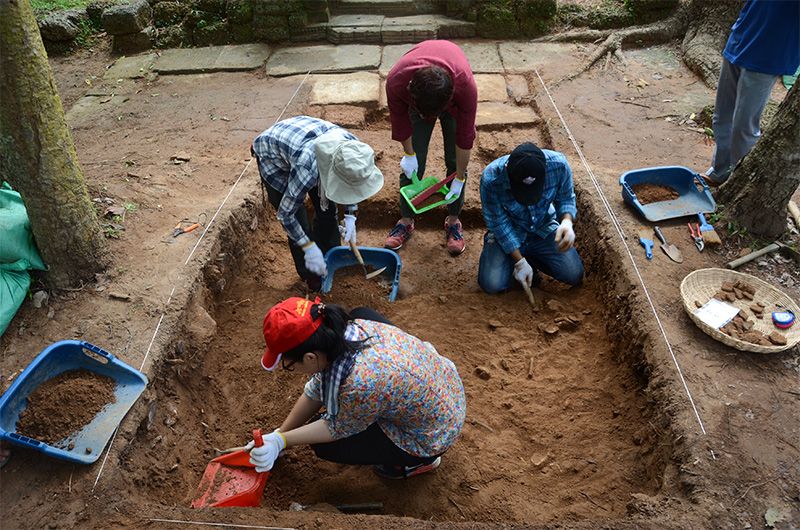 Trainees work on an archeological dig at Banteay Kdei Temple. (Photo courtesy of Sophia University)
Trainees work on an archeological dig at Banteay Kdei Temple. (Photo courtesy of Sophia University)
That was why we opened the Sophia Asia Center for Research and Human Development in Siem Reap, the closest town to Angkor Wat, in 1996. Conservators are obviously indispensable for preserving the monuments, and the ideal is for them to come from the local populace as they best understand Cambodia’s traditions and culture and can convey the meaning and significance of these to the world. Angkor Wat is a symbol of national unity and having Cambodians work on restoring the monuments is highly significant in terms of rebuilding the nation as a whole.
Since 1997 we have been inviting Cambodian students to Sophia to learn the skills and knowledge needed to carry out preservation and restoration work as well as conduct surveys on the monuments. The techniques can be learned in a year, but we want the students to understand the social and historical background of the monuments and the religious perspectives of the original builders as well as develop a more sophisticated awareness of the issues they face in their restoration work. So far seven students have earned PhDs and eleven master’s degrees from Sophia. They now play a central role in restoration work at Angkor Wat. Several have even taken such important positions as vice-dean of the Royal University of Phnom Penh, division heads at the authority for the protection of the site and management of the region of Angkor/Siem Reap, and director general of the Ministry of Culture and Fine Arts.
We have tried as much as possible to use the same traditional techniques and materials as when the monuments were first built, even if this slowed our progress. We also carried out surveys in tandem with preservation work, studying and double-checking everything as we go. It is a long-term project.
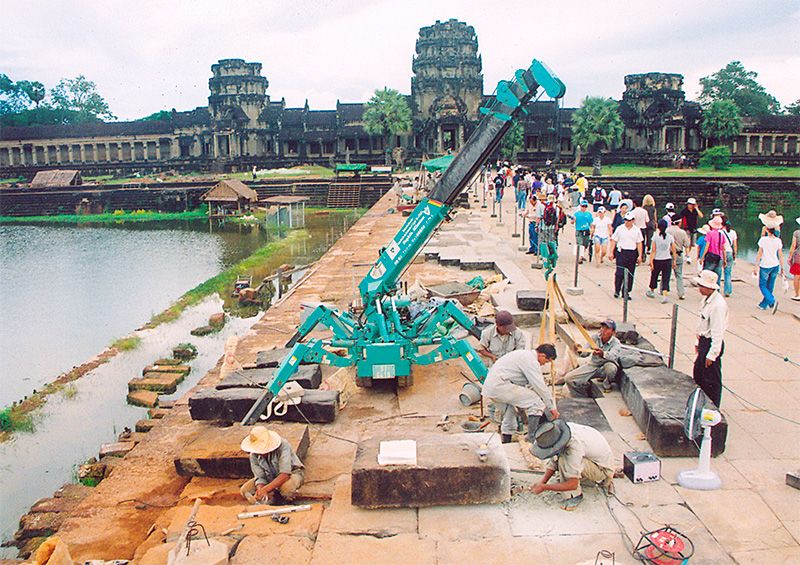 The first phase of restoration work on the western approach to the temple. (Photo courtesy of Sophia University)
The first phase of restoration work on the western approach to the temple. (Photo courtesy of Sophia University)
(*1) ^ A twelfth-century temple located seven kilometers northwest of Angkor Wat.
A Spirit of Pious Devotion
INTERVIEWER What has impressed you the most during the restoration work?
ISHIZAWA In February 2001 we discovered 274 Buddhist statues that had been buried in the ground at the Banteay Kdei Temple. The images ranged in size from around 20 centimeters up to 1.8 meters. Most were made from sandstone, but we also uncovered two small bronze Buddhas. It was a totally unexpected find, and a great way to mark the tenth year of our excavation training program. It was the largest discovery of its kind since French scholars first introduced the wonders of Angkor to Europe in 1860.
When we discovered the images, the eight Cambodian students who were taking part in the dig joined their hands in prayer before cleaning the mud and dirt off them with bamboo spatulas and brushes. I was moved by the piety and reverence that the Cambodians, all of them devout Buddhists, showed the images.
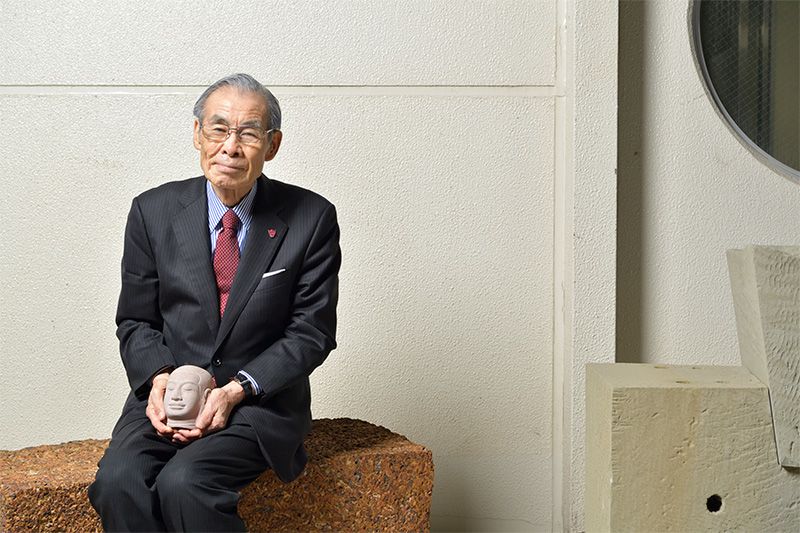 Professor Ishizawa sits on a block of stone transported from Angkor to Sophia University while holding a stone image of Jayavarman VII, the king who laid the foundations of the Angkor dynasty.
Professor Ishizawa sits on a block of stone transported from Angkor to Sophia University while holding a stone image of Jayavarman VII, the king who laid the foundations of the Angkor dynasty.
The images had had their heads broken off before being buried and very few could be restored to their original form. I think it’s quite likely that there are other images buried in a similar way. Because they had been buried underground, though, they had suffered very little erosion or other damage from the elements and still maintained the serene facial expressions as 800 years ago.
INTERVIEWER What was the reason for this iconoclasm?
ISHIZAWA We’ve looked into various possibilities, but the facts remain shrouded in mystery. Perhaps there was some historical event that sparked a spate of iconoclastic violence, like religious antagonism between Hinduism and Buddhism that was sponsored by the kings. Or possibly a power struggle within the ruling royal family at court broke out.
Whatever the case, the way that each image was broken and buried shows that incidents of anti-Buddhist iconoclasm toward the end of the Angkor court period did not take place in a context of chaos and unrest. Until recently, the standard scholarly explanation was that the end of the dynasty was a decadent period of decline in which there was a power vacuum, and that the court eventually fell to the armies of the neighboring Ayutthaya kingdom. But this discovery has cast doubt on this thesis. This type of iconoclasm could not have happened unless ordinary political authority was still functioning and the royal command was still effective.
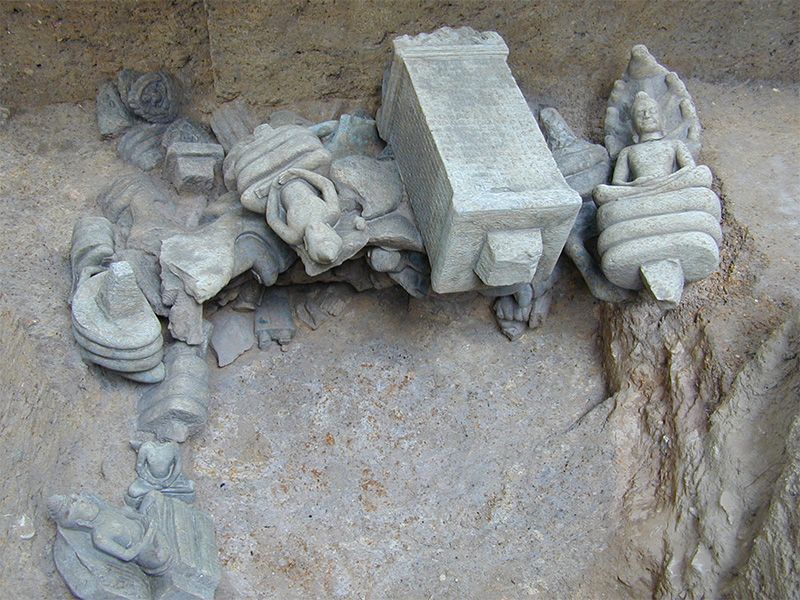 Some of the damaged Buddhist images discovered by Ishizawa’s team. (Photo courtesy of Sophia University)
Some of the damaged Buddhist images discovered by Ishizawa’s team. (Photo courtesy of Sophia University)
Respecting Cambodian Values
INTERVIEWER What are the things you have to be mindful of in a restoration project like this?
ISHIZAWA Cambodians are quite accepting of having agricultural fields and livestock in among the monuments. They also aren’t much concerned that the monuments are enveloped in thick jungle. Preserving the monuments in a form that balances nature and people’s lifestyles is, I think, more in accord with the cosmological beliefs of Cambodians. I think it’s important to strike a balance among developing local village society, preserving indigenous folk culture, and creating a comprehensive, all-inclusive approach to preserving and restoring the monuments. After all, Angkor Wat is not only a reminder of past glories, it is also a sacred place where pilgrims and visitors still come to pay their respects today.
After having spent many years observing the multitude of sculptures carved into the walls of the monuments, I have come to feel that they aren’t the products of forced labor. In a Western European context, you would probably say that slaves worked to build a grand fortress for the king, but I think maybe things were a bit different. Tens of thousands of stonemasons and sculptors worked for decades to carve out a grand temple complex. But they found in the work the joy of performing meritorious deeds for which they would ultimately get their karmic reward.
In the end, it is the Cambodian people who must decide how the environment surrounding the monuments at Angkor is preserved protected into the future. All we can do is lend our assistance and help in any way we can.
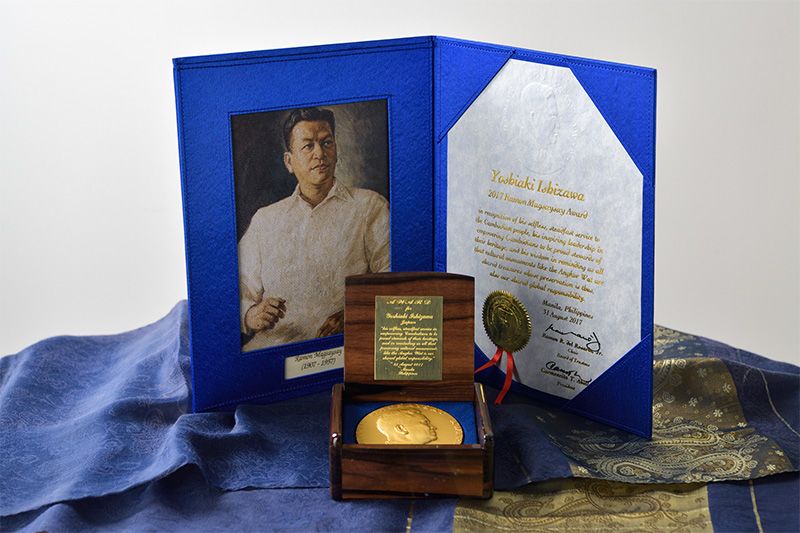 Professor Ishizawa’s Ramon Magsaysay Award citation and medal.
Professor Ishizawa’s Ramon Magsaysay Award citation and medal.
